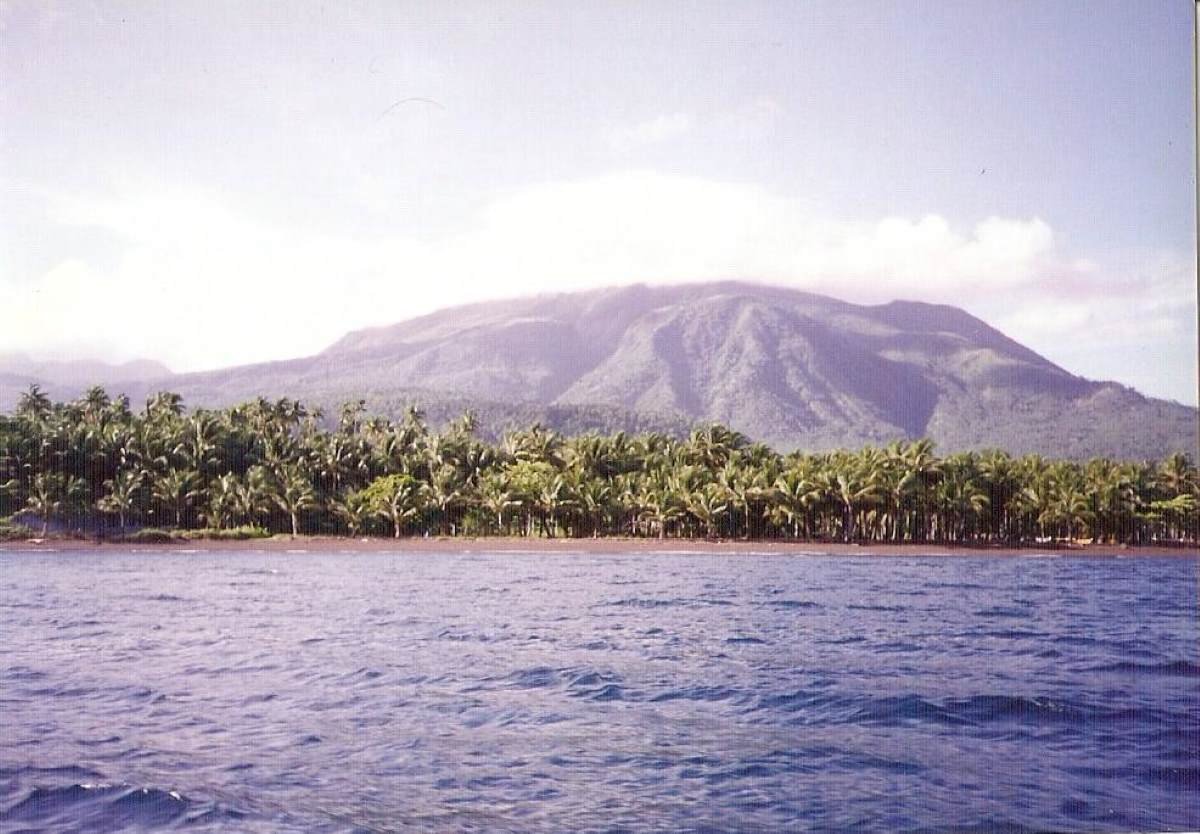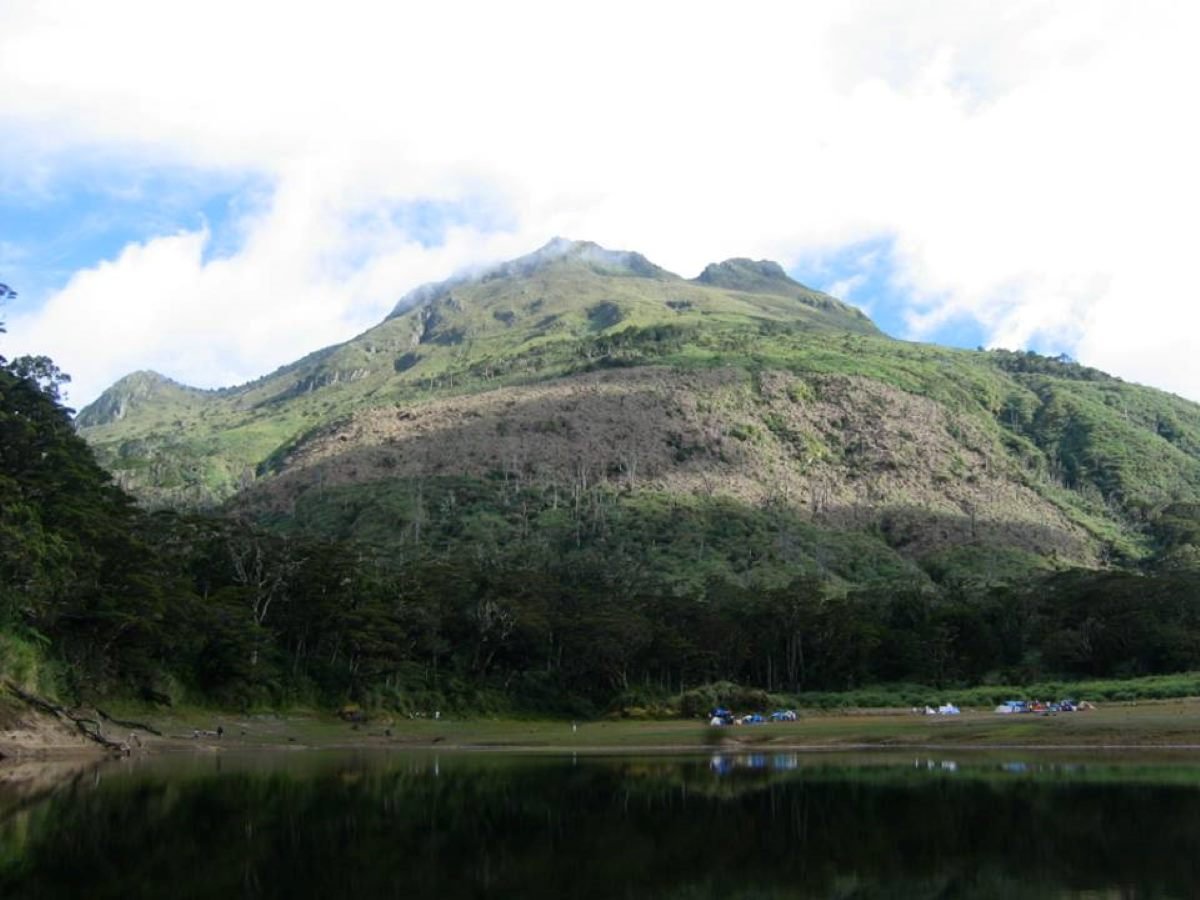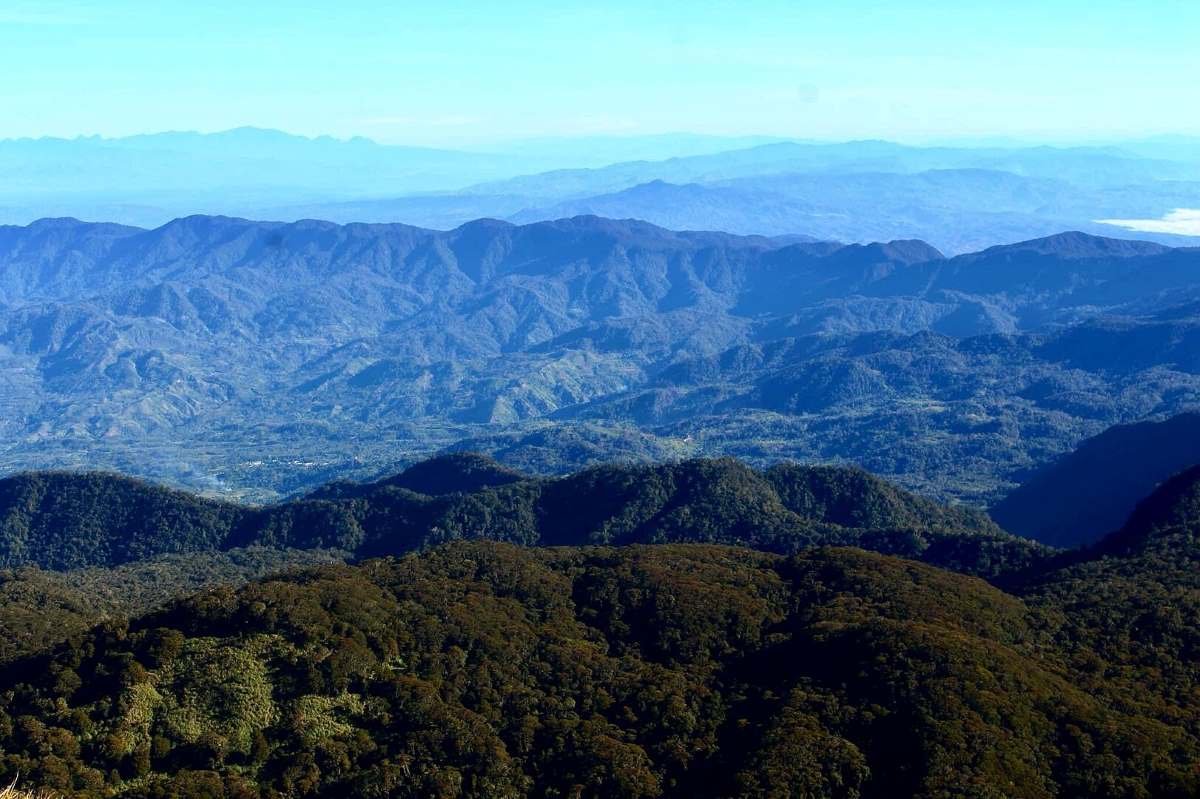Stratovolcano: Fiery Wonders of the Philippines
Introduction: The Majestic Stratovolcano
Imagine towering peaks, lush forests, and the occasional plume of smoke spiraling into the sky—welcome to the fascinating world of stratovolcanoes! These awe-inspiring natural formations are a significant part of the Earth’s dynamic landscape, and the Philippines is home to some of the most breathtaking examples. But what exactly is a stratovolcano?
A stratovolcano, also known as a composite volcano, is a large, steep-sided volcano built up by many layers (strata) of hardened lava, tephra, pumice, and volcanic ash. Unlike shield volcanoes, which have gentle slopes and are formed by the flow of low-viscosity lava, stratovolcanoes are characterized by their explosive eruptions and conical shape. They are formed at convergent plate boundaries, where one tectonic plate subducts beneath another, leading to the melting of mantle material and the rise of magma.
In the Philippines, stratovolcanoes are not just geological wonders; they are deeply intertwined with the country’s culture, history, and biodiversity. These towering giants have shaped the land, influenced local communities, and become symbols of nature’s incredible power. In this blog, we’ll take you on a journey through the equally prominent stratovolcanoes in the Philippines (aside from Mount Mayon, Mount Pinatubo, and Taal Volcano), exploring their geological significance, geographical features, tourist attractions, and the rich folklore that surrounds them.

Kanlaon Volcano: The Majestic Guardian of Negros Island
Geological Facts: The Living Giant of Negros
Kanlaon Volcano, towering at 2,465 meters, is the tallest peak in the Visayas and ranks among the most active volcanoes in the Philippines. As a classic stratovolcano, Kanlaon illustrates the powerful influence of tectonic activity on the surrounding terrain. Positioned along the Negros Volcanic Belt, it marks the area where the Philippine Sea Plate is forced under the Eurasian Plate. This subduction process has given rise to numerous volcanoes in the region, with Kanlaon standing out as the most notable.
Kanlaon’s geological history is rich with activity. It has erupted over 30 times since the 19th century, with its most recent eruption occurring in 2017. These eruptions are often characterized by phreatic explosions, where steam and volcanic gases escape through cracks in the Earth’s crust, sending ash and debris skyward. Kanlaon’s frequent activity is a stark reminder of the powerful forces at play beneath our feet.
Geographical Facts: A Landscape of Fire and Beauty
Kanlaon’s eruptions have shaped the surrounding landscape, creating a diverse environment teeming with life. The volcano is surrounded by dense forests, home to a variety of flora and fauna, including some species found nowhere else in the world. Its slopes are steep and rugged, making it a challenging climb for mountaineers.
One of the most significant eruptions in Kanlaon’s history occurred in 1902, when a massive explosion sent ash falling as far as Iloilo City approximately 60km away. The eruption devastated nearby communities, causing significant loss of life and property. However, the fertile volcanic soil left behind has allowed agriculture to thrive, turning the surrounding area into a lush paradise.

Major Tourist Attractions: Nature’s Masterpiece
Kanlaon Volcano is not just a geological wonder; it is also a major tourist destination. The Kanlaon Natural Park, which surrounds the volcano, offers visitors a chance to explore its diverse ecosystems. The park is home to the rare Philippine spotted deer, Visayan warty pig, and various species of birds. The trek to the summit is challenging but rewarding, offering breathtaking views of the surrounding islands and the crater itself.
Kanlaon holds deep cultural significance for the local communities, who regard the mountain as a sacred site. To the indigenous people, Kanlaon is believed to be the dwelling place of their gods. This deep respect is evident in the numerous festivals and rituals dedicated to the mountain, celebrating its vital role in their spiritual and daily lives.
Trivia: The Legend of Laon
According to local folklore, Kanlaon was named after the ancient Visayan god Laon, who was believed to reside in the volcano. The legend tells of a great serpent that terrorized the people of Negros Island. Laon, a benevolent deity, descended from the heavens and defeated the serpent, after which the volcano was named in his honor. To this day, the locals pay homage to Laon, believing that the volcano’s eruptions are a sign of the god’s presence.

Mount Bulusan: The Wrathful Beauty of Sorsogon
Geological Facts: A Testament to Tectonic Fury
Mount Bulusan, located in Sorsogon province, is another active stratovolcano that has captured the imagination of many. Standing at 1,565 meters, Bulusan is part of the Bicol Volcanic Arc, which is formed by the subduction of the Philippine Sea Plate beneath the Eurasian Plate. This tectonic activity has given rise to a series of volcanoes along the eastern side of the Philippines, with Bulusan being one of the most active.
Bulusan’s geological history is marked by frequent eruptions, with over 20 recorded since the 19th century. Its eruptions are typically phreatic, caused by the interaction of water with hot volcanic rocks, leading to explosive steam-driven blasts. These eruptions often create ash plumes that blanket nearby towns, disrupting daily life and agriculture.
Geographical Facts: A Stratovolcano Shaped by Eruptions
The landscape around Mount Bulusan is a testament to the volcano’s explosive nature. The area is dotted with craters, lava domes, and hot springs, all evidence of its violent past. One of the most significant eruptions occurred in 2016 when a series of phreatic explosions caused widespread ashfall, forcing the evacuation of nearby communities and disrupting air travel.
Despite the hazards, the region around Mount Bulusan is a haven for biodiversity. The Bulusan Volcano Natural Park, which encompasses the stratovolcano, is home to a rich array of flora and fauna, including several endangered species. The park’s diverse ecosystems range from lowland forests to montane forests, providing a sanctuary for wildlife.

Major Tourist Attractions: A Nature Lover’s Paradise
Mount Bulusan is a top choice for those who love nature and seek adventure. The Bulusan Volcano Natural Park provides a variety of experiences, from trekking through lush trails to bird watching and peaceful kayaking on Bulusan Lake. The park’s vibrant forests, rich with diverse species of flora and fauna, offer an ideal setting for ecotourism enthusiasts.
Culturally, Mount Bulusan is an important symbol for the people of Sorsogon. The stratovolcano has inspired numerous legends and stories, many of which are still told today. The local communities have a deep respect for the volcano, viewing it as both a giver of life and a potential destroyer. This duality is reflected in the various rituals and ceremonies performed to appease the volcano’s spirit.
Trivia: The Curse of Bulusan
One of the most famous legends associated with Mount Bulusan is the story of the volcano’s curse. According to local folklore, the volcano is inhabited by a powerful spirit who was angered by the disrespect shown by the people of Sorsogon. In retaliation, the spirit unleashed a series of eruptions that devastated the region. To this day, the locals believe that the volcano’s eruptions are a sign of the spirit’s displeasure and that they must perform rituals to appease it.

Mount Hibok-Hibok: The Fiery Sentinel of Camiguin
Geological Facts: A Volcano Born of Destruction
Mount Hibok-Hibok, located on the island of Camiguin, is one of the most active volcanoes in the Philippines. Standing at 1,332 meters, Hibok-Hibok is part of the Pacific Ring of Fire, a region known for its intense volcanic activity. The volcano is a classic stratovolcano, formed by the subduction of the Philippine Sea Plate beneath the Eurasian Plate.
Hibok-Hibok’s geological history is marked by several major eruptions, the most significant of which occurred in 1951. This eruption was catastrophic, with pyroclastic flows, lava flows, and ashfall devastating much of Camiguin Island. The eruption resulted in the loss of over 3,000 lives and the displacement of thousands more. It was this event that put Hibok-Hibok on the map as one of the most dangerous stratovolcanoes in the country.
Geographical Facts: A Landscape Shaped by Fire
The eruptions of Mount Hibok-Hibok have dramatically shaped the landscape of Camiguin Island. The island is dotted with volcanic craters, hot springs, and lava flows, all evidence of the volcano’s fiery past. The most recent eruption in 1951 left a lasting impact on the island, with entire villages buried under volcanic debris.
Mount Hibok-Hibok, though capable of significant eruptions, has also created a lush and diverse environment. The volcano’s slopes are densely forested, supporting a wide array of plant and animal life. The nutrient-rich volcanic soil has made the land highly fertile, enabling local agriculture to flourish with bountiful crops of fruits and vegetables.

Major Tourist Attractions: Camiguin’s Crown Jewel
Mount Hibok-Hibok is one of Camiguin Island’s most popular tourist attractions. The stratovolcano is part of the Mount Hibok-Hibok Natural Monument, a protected area that offers visitors a chance to explore the island’s volcanic landscapes. The trek to the summit is challenging but offers stunning views of the island and the surrounding sea.
Camiguin Island is well-known for its geothermal hot springs, heated by the volcanic activity below ground. These springs are a popular attraction, offering a calming and therapeutic experience for tourists looking to unwind after exploring the island’s stunning natural landscapes.
Trivia: The Legend of the Giant
Local folklore tells the story of a giant who once lived on Camiguin Island. According to the legend, the giant was so powerful that his movements caused the earth to shake and the volcano to erupt. The people of the island believed that the giant’s spirit still resides within Mount Hibok-Hibok, and that the volcano’s eruptions are a sign of the giant’s anger.

Mount Apo: The Grandfather of Philippine Mountains
Geological Facts: The Dormant King
Mount Apo, towering at 2,954 meters, holds the title of the highest peak in the Philippines and is among the nation’s most renowned stratovolcanoes. Situated on the island of Mindanao, it is a key feature of the Cotabato Arc, a volcanic chain created by the subduction of the Philippine Sea Plate beneath the Eurasian Plate. Unlike many other volcanoes, Mount Apo is currently dormant, with its last known eruption taking place thousands of years ago.
Despite its dormancy, Mount Apo is still considered an active stratovolcano due to the presence of geothermal activity in the area. The volcano’s slopes are dotted with fumaroles, hot springs, and solfataras, all evidence of the heat and gases still escaping from beneath the surface. Mount Apo’s geological history is marked by massive eruptions, with the most significant event occurring around 20,000 years ago, when a catastrophic explosion created the volcano’s massive crater.
Geographical Facts: The Crown of Mindanao
Mount Apo, with its towering stature and vast crater, stands out prominently in the Mindanao region. The volcano is enveloped by a spectrum of ecosystems, including dense lowland rainforests, elevated montane forests, and open grasslands. These varied environments host a rich diversity of wildlife, including the critically endangered Philippine eagle, which is often observed flying over the volcano’s slopes.
A notable volcanic event in Mount Apo’s history is the creation of Lake Venado, a crater lake situated close to the summit. This scenic lake attracts many trekkers, providing breathtaking views of the surrounding terrain. Additionally, the rich volcanic soil in the area has been highly beneficial for agriculture, leading to a reputation for producing excellent fruits and vegetables.

Major Tourist Attractions: A Sacred Mountain
Mount Apo is a major tourist destination, attracting adventurers and nature lovers from around the world. The trek to the summit is challenging, but the reward is well worth the effort. The view from the top is breathtaking, offering panoramic vistas of the surrounding islands and the crater below.
Culturally, Mount Apo holds great significance for the indigenous peoples of Mindanao. The mountain is considered sacred, and many local communities believe that it is the dwelling place of their gods. This reverence is reflected in the various rituals and ceremonies performed by the indigenous peoples, who view the mountain as a symbol of their cultural heritage.
Trivia: The Legend of Apo Sandawa
According to local legend, Mount Apo was named after Apo Sandawa, an ancient warrior who was revered as a god by the indigenous peoples of Mindanao. The legend tells of how Apo Sandawa protected his people from invaders and was eventually transformed into a mountain by the gods as a reward for his bravery. The locals believe that the spirit of Apo Sandawa still resides within the mountain, and that he watches over the land and its people.

Mount Banahaw: The Mystic Stratovolcano
Geological Facts: A Sleeping Giant
Mount Banahaw, located on the island of Luzon, is a dormant stratovolcano that has long been regarded as a mystical and spiritual place. Standing at 2,170 meters, Banahaw is part of the Luzon Volcanic Arc, which is formed by the subduction of the Philippine Sea Plate beneath the Eurasian Plate. The volcano’s last eruption occurred in the 18th century, and it has remained dormant ever since.
Despite its dormancy, Mount Banahaw is still considered active due to the presence of geothermal activity in the area. The volcano’s slopes are home to several hot springs and fumaroles, which are a testament to the heat and gases still escaping from beneath the surface. Banahaw’s geological history is marked by a series of eruptions, with the most significant event occurring in the 16th century, when a massive explosion created the stratovolcano’s distinctive crater.
Geographical Facts: A Landscape of Mystery
Mount Banahaw’s intriguing geographical features add to its enigmatic reputation. The volcano is enveloped in dense forests teeming with a wide array of plant and animal species. Its slopes are dotted with various caves, waterfalls, and natural springs, many of which are revered as sacred by local communities.
A key volcanic event in Mount Banahaw’s history was the creation of the Kapatagan Plain, a vast flat expanse near the summit. This area is a favored spot for hikers, providing spectacular views of the surrounding scenery. Additionally, the rich volcanic soil in the region has greatly supported agricultural development, making it known for its high-quality fruits and vegetables.

Major Tourist Attractions: A Spiritual Haven
Mount Banahaw draws many visitors, including adventure enthusiasts and those on spiritual quests. The climb to the summit is demanding, but the effort is richly rewarded. From the peak, hikers are treated to awe-inspiring panoramic views of the surrounding islands and the crater below.
Culturally, Mount Banahaw holds great significance for the local communities. The mountain is considered sacred, and many believe that it is a place of spiritual power. This reverence is reflected in the various rituals and ceremonies performed by the local communities, who view the mountain as a symbol of their cultural heritage.
Trivia: The Mystic Powers of Banahaw
According to local legend, Mount Banahaw is believed to possess mystical powers. The mountain is said to be inhabited by spirits and deities who can grant wishes and heal the sick. Many people make pilgrimages to Banahaw in the hopes of receiving blessings and guidance from the mountain’s spirits. The locals believe that the mountain’s power is strongest during the full moon, and that it is a place where the veil between the physical and spiritual worlds is thin.
Conclusion: Why the Philippines’ Stratovolcanoes Are a Must-Visit
The stratovolcanoes of the Philippines are far more than mere geological structures; they are dynamic forces that have influenced the nation’s landscape, culture, and history. From the majestic summit of Mount Apo to the enigmatic slopes of Mount Banahaw, these volcanoes provide insight into the immense natural forces that continue to mold our world.
Exploring these stratovolcanoes offers more than an adventure; it’s a voyage through history, revealing the sheer force of nature and the tenacity of the communities residing nearby. To ensure tourist safety, the Philippine government has implemented rigorous regulations and monitoring systems to manage the risks linked with volcanic activity.
So, whether you’re an adventure seeker, a nature lover, or a spiritual pilgrim, the stratovolcanoes of the Philippines are waiting to be explored. Come and experience the fiery wonders of this beautiful archipelago, and discover the stories and legends that make these volcanoes truly unique.
Let’s embark on this volcanic journey together, and who knows? You might just find yourself standing at the edge of a crater, gazing into the heart of a sleeping giant.

